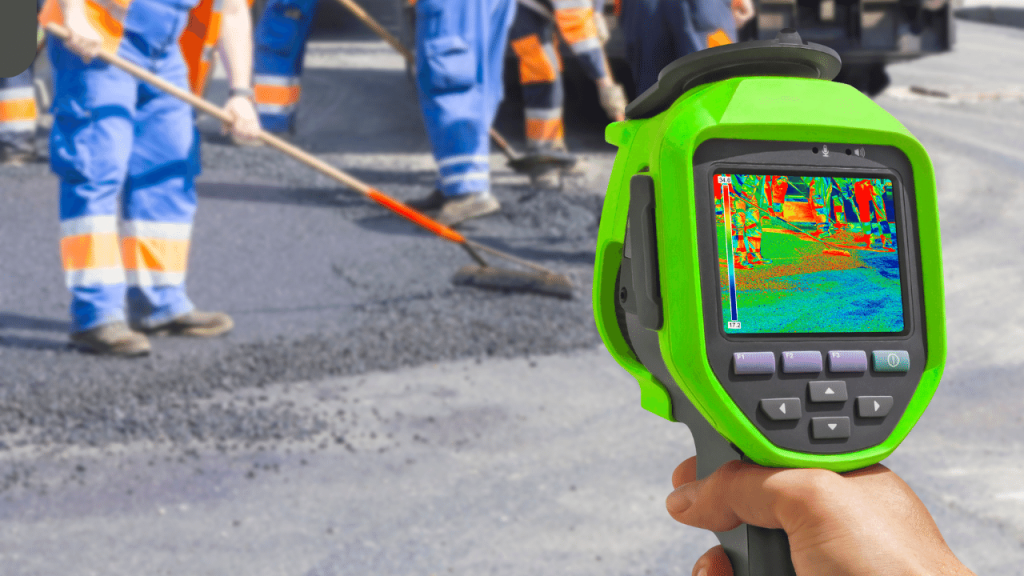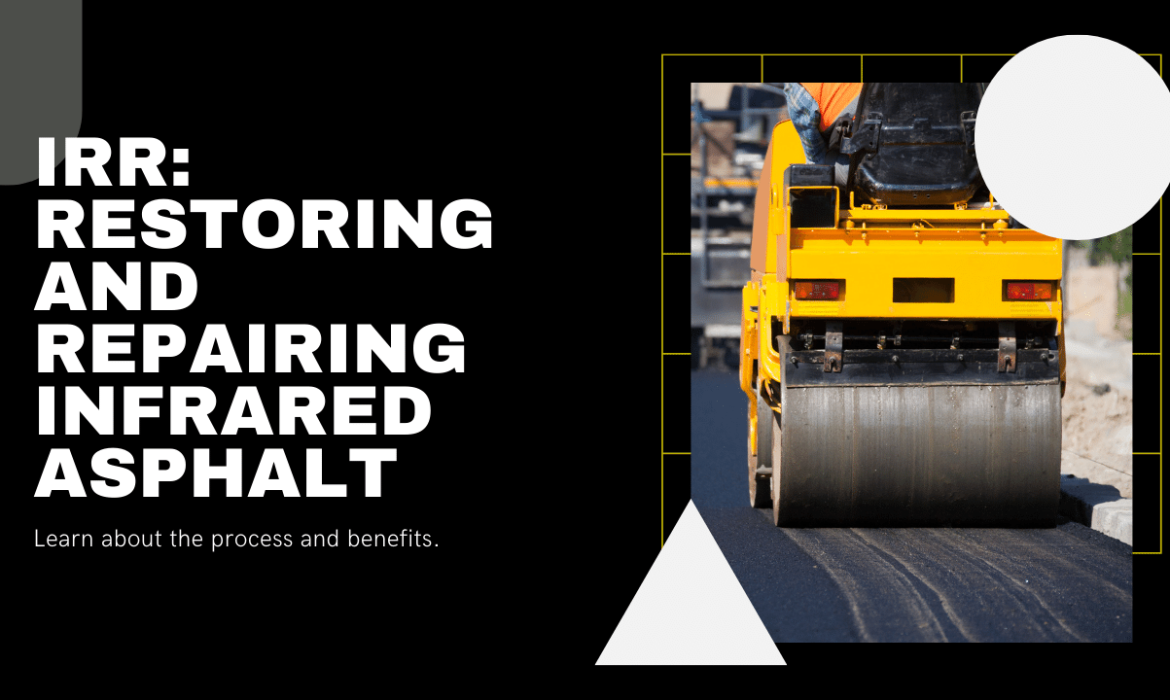Infrared asphalt restoration (IRR) is an innovative and speedy way of dealing with and repairing damaged asphalt surfaces. This technology has the capacity of employing infrared heat to give a fresh new look and a renewed spirit to old or damaged asphalt, thereby extending its lifespan and ensuring it looks great and is as sturdy as ever. The need for sustainable and durable asphalt surfaces increases daily, and IRR is such a cost-effective and eco-friendly solution that benefits property owners, municipalities, and infrastructure managers.
Knowing What Infrared Asphalt is and How it Works
Infrared asphalt is a unique mix of asphalt and gravel which is made specifically to be highly reactive on heat from an infrared source of light. Infrared asphalt contains, in the following order: bitumen, filler materials, and an optimized additives package that is dedicated to thermal and workability improvement. The asphalt becomes a reversible, infrared radiation-activated material when it is used with a targeted technology. It softens and becomes malleable so that it can join the existing surface perfectly.

Infrared Asphalt Restoration: An Overview
Among the best features provided by IRR is the improved appearance and durability of asphalt. This is accomplished by means of infrared heat’s restorative properties, which can be used for the purpose of healing existing asphalt. Some examples are racks that are filled in and shapeless sites that are smoothed out. The initial color and texture can also be restored. This aesthetic enhancement not only uplifts the visual look of the area but also supports an increase in property value.
From a cost perspective, the IRR method offers some benefits compared to the old asphalt repair techniques. In most cases, it is less labor-intensive and requires fewer materials since its main target is the activation and mixing of the existing asphalt, instead of reinstallation. This means that the expense of the project will likely be lower; hence, IRR becomes a more financially sustainable option for property owners, leaders of communities, and infrastructure managers.
The IRR Process: Sequential Way of Thinking
The IRR process is a well-thought-out and strategic process to protect the asphalt from damages. The first step is surface preparation that involves cleaning and removing debris that may be found, like dirt, gravel, or vegetation. This is one of the essential steps necessary to provide a clean surface for the infrared application.
The next step of infrared heat applications is of primary importance for IRR treatment. Instead of conventional asphalt heating and milling methods, infrared heating equipment is employed to penetrate the existing asphalt to soften it up, thus allowing for a seamless blending with the new infrared asphalt material. Thus, the infrared heat goes to the pavement’s surface in order to reactivate the bitumen and then enables the combining of the new and old asphalt components.
The last step of the IRR process is the mixing and compacting of the asphalt. Within a pre-set time, infrared heat softens the top layer; then a new layer of infrared asphalt is laid and uniformly mixed to the old material. Both sides will then be smoothed, and the final result will be the same for both. The paver compacts the blended asphalt using specialized equipment, like rollers or hand tamper, to create an even, smooth, sturdy surface that can last a long time.
Preparing the Asphalt Surface for IRR
Crafting a perfect surface is considered of major importance in a successful unchanged restoration method because it is the foundation of your future restoration goals. At the very first stage, this task involves washing and removing dirt, pebbles, and any other vegetation that may stick to the asphalt surface. The rolling of the new asphalt on top of the old one guarantees a clean patch of surface, necessary to the heat transfer since the different materials will integrate.

Besides the cleansing of the topmost layer, it is necessary to analyze and address fundamental factors which could result in deteriorating the asphalt. This might mean making structural corrections or filling potholes or cracks that might compromise the system’s effectiveness through IRR treatment. As a result, IRR allows the treatments to focus on the increase of the surface life and its durability.
Maintenance and Upkeep of Infrared Asphalt
The care and maintenance of IRR-treated asphalt surfaces is an important part of keeping them working long-term and looking as great as when they were installed. Scheduled maintenance procedures include a breakdown of inspection, repair of any damages in the early stages, and preventive missions to allow for the asphalt to last longer in the face of environmental factors.
Regular inspections of IRR-covered asphalt surfaces will help in early detection of possible problems and the administration of timely intervention which in turn will prevent the further damaging of the surface. Routine inspection will allow you to see if there are any cracks, potholes, or weathering, which you can then mitigate. Crossroads will tackle these with the use of special materials. Continuous monitoring and repair of any damages or imperfections may increase the life span of the IRR-treated asphalt and augment the performance of the pavement with incomparable quality.
Through the use of a comprehensive maintenance program and inspections to tackle any concerns immediately, owners of property and managers of infrastructure would then be able to get the maximum service life of their heated asphalt by imparting them both with a durable and pleasing look for many years.

